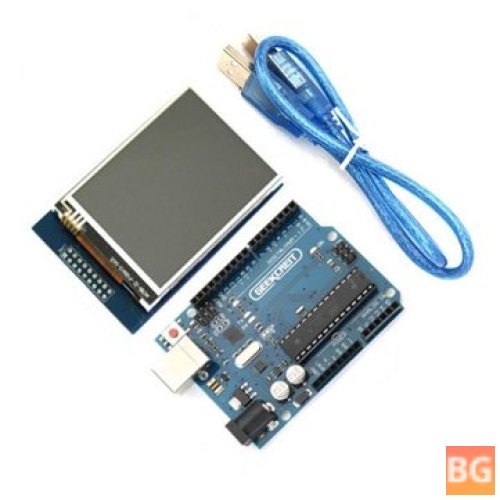The USB Development Board with TFT Touch Display Module is a high-quality physical computing platform that uses the Processing/Wiring language.
Its compatibility with the original UNO R3 board and open-source nature make it an excellent choice for beginners and advanced users. Additionally, the board features a bright and clear 2.8 inch LCD TFT display with backlight. Although it requires additional shield boards for interfacing with sensors and motors, this versatile and high-performing product is highly recommended for anyone looking to explore the world of physical computing.
In today's review we will be discussing the USB Development Board with TFT Touch Display Module, a physical computing platform that utilizes the Processing/Wiring language.
This development board boasts perfect quality and performance, and features a 2.8 inch LCD TFT display with 4 white-LED backlight.
What sets this product apart is its compatibility with the original UNO R3 board which makes it a great choice for development purposes. The TFT touch display module offers a bright and clear display, making it ideal for visual applications. The product's open-source nature and simple i/o board make it easy to use for both beginners and advanced users.
One of the drawbacks of this product is that it requires additional shield boards to interface with sensors and motors, which can be inconvenient for some users. However, the board's versatility and compatibility make it a strong contender in the market.
Pros:
- Compatible with original UNO R3 board
- Open-source physical computing platform
- Simple i/o board for ease of use
- Bright and clear 2.8 inch LCD TFT display with backlight
Cons:
- Requires additional shield boards for interfacing with sensors and motors
In the end the USB Development Board with TFT Touch Display Module is a top performer in the market for physical computing platforms. Its compatibility with the UNO R3 board, open-source nature, and bright display make it an excellent choice for both beginners and advanced users. While it may require additional shield boards for interfacing with sensors and motors, the pros outweigh the cons with this versatile and high-performing product. Overall it is highly recommended for anyone looking to explore the world of physical computing.
